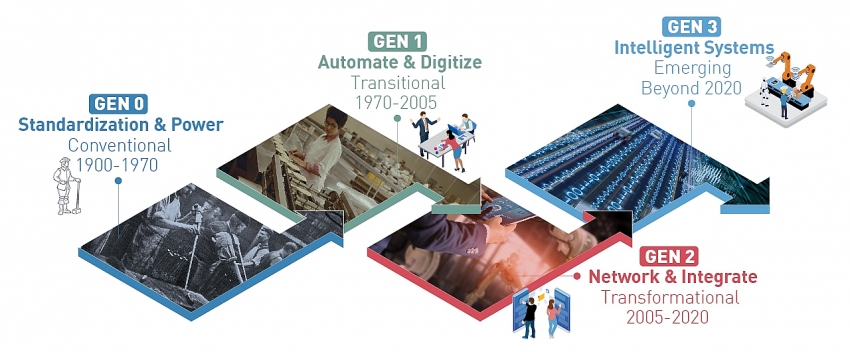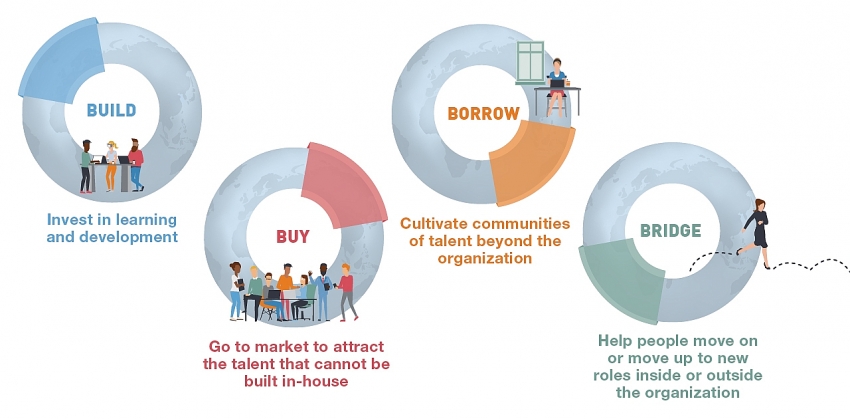Future of manufacturing: Up- and re-skilling during a tech revolution
 |
| Le Thi Kim, head of Staffing and Outsourcing Services, North, ManpowerGroup Vietnam |
To change or not to change?
We are going through the era of digital transformation, with the transition to full digitisation already well underway and accelerating daily in all sectors. Digitisation, automation, and transformation are affecting every industry, disrupting skills, and creating new jobs.
ManpowerGroup’s The Future Factory research shares that 65 per cent of total jobs that Gen Z (those born in 1996 and after) will do simply do not exist yet. As jobs evolve, so will the skills needed to perform them. The World Economic Forum (WEF) points out that 42 per cent of the core skills within roles on average are expected to change by 2022.
Apparently, automation, in tandem with the global health crisis, is creating a “double-disruption” scenario for both employers and workers. Besides creating new roles with new skills demanded for the workforce, they both require new approaches for enterprises to improve their employees’ capabilities for in-demand jobs and avoid being left behind.
Manufacturing at the vanguard of technological transformation
As the digital transformation, part of the Fourth Industrial Revolution (IR 4.0), is influencing how the world functions in all aspects, major industries like manufacturing and processing are definitely involved. In fact, due to the strong spillover effects to other sectors, manufacturing has played a key role in the growth and development of any developing country. In 2020, the industry has accounted for almost half (1.25 per cent) of Vietnam’s total GDP growth rate of 2.91 per cent.
Since the end of the First Industrial Revolution in the early 1900s, manufacturing has transformed and evolved through four technical generations – Gen 0 to 3. We are now at the tail end of Gen 2 which is characterised by the transformational power of extreme improvements in software. With the high speed of evolution (it took about 70 years to move from Gen 0 to Gen 1, 35 years to move from Gen 1 to Gen 2), we expect to be fully immersed in Gen 3 emerging beyond 2020 where technology becomes more widely available in all aspects and characterised with intelligent systems.
 |
| Manufacturing has transformed and evolved through four technical generations – Gen 0 to 3 |
Breakthroughs in mobile connectivity, the Internet of Things, AI, robotics, 3D printing, nanotechnology, quantum computing, and materials science will thoroughly transform manufacturing and production systems in the next five to 10 years. Therefore, as the foundation of this massive swift, higher requirements are put on our future workforce, that is, being able to understand and manage these highly integrated systems.
Are the current skills suitable for the workforce? What should be done?
Worldwide, according to the WEF, more than 1 billion jobs, or a third of all global jobs, will be transformed by technology over the next 10 years. This will require 1 billion people to retrain and reskill by 2030. Hence, we can easily find the answer to the question “Are the current skills suitable for the workforce?”
According to The Future Factory research, almost half of all roles in manufacturing (49 per cent) will need to change within 3-5 years as the industry transitions to become fully digital.
The workforce analysis also identifies 165 new and evolving roles across seven areas of technical expertise. We refer to such areas as "domains”, at which the impact of transformation of manufacturing differs.
Thus, in order to develop the talent they need to remain competitive, manufacturing companies need new approaches for training, that is, to up-skill and re-skill people at speed and at scale. It is now or never.
How to catch “the shift” of IR 4.0 in manufacturing?
How can businesses shorten the skills gap of their employees in the shortest time?
To begin with, enterprises should determine those skills that will be essential in the short, medium, and long term. Map the 165 new roles within the seven domains and use this information to identify future talent needs.
Following on, we suggest organizations to follow “the four Bs” strategy. The first step starts with investing in learning and development programmes for employees to achieve new skills for specific roles (“Build”). As the skills and capabilities vary from person to person, such programmes should be designed and applied upon personal performance and career path.
 |
| “The four Bs” strategy |
A customer of ManpowerGroup Vietnam in manufacturing recently shared about their story of up-skilling people within their organisation. They have implemented cross-training and role rotations for employees among different departments, especially supply chain and sales. The objectives are to let the staff running different functions understand the roles and characteristics of others, as well as help them develop new skills for their career path and in-demand jobs in the future. This practice has been applied for several years and the outcomes have received lots of positive feedback from staff at all levels.
Companies have other choices to prepare a skilled and competent workforce. These include asking for help from workforce solutions providers like ManpowerGroup Vietnam to have the talent that cannot be built in-house (“Buy”) and cultivating communities of talent beyond the organisation (“Borrow”).
Another approach is helping people move on or move up to new roles inside or even outside the organisation (“Bridge”) which is ideal for employees whose potentials are better matched in other positions.
Great opportunities come with big challenges. This is particularly true in the context of IR 4.0. All in all, up-skilling and re-skilling are the most effective and sustainable way for businesses to remain competitive and stay ahead in “the shift” of the IR 4.0.
What the stars mean:
★ Poor ★ ★ Promising ★★★ Good ★★★★ Very good ★★★★★ Exceptional
 Tag:
Tag:
Related Contents
Latest News
More News
- Green jobs needed as businesses embrace sustainability (April 06, 2023 | 11:24)
- HR leaders urged to handle work management in global uncertainty (October 20, 2022 | 17:07)
- Facing the biggest HR challenges in 2022 (October 10, 2022 | 12:14)
- Solving talent shortages amid fierce human capital landscape (August 26, 2022 | 16:18)
- Employers expect hiring to increase in H2 (August 13, 2022 | 21:30)
- Stakeholders seek sustainable strategies to retain workers (June 21, 2022 | 17:54)
- Accelerating trends and renewed urgency for labour (May 05, 2022 | 14:25)
- Latest HR trends in logistics revealed (April 28, 2022 | 14:38)
- Sustainable employment under digital transformation and the pandemic (October 29, 2021 | 15:04)
- Employment security and the future of skills for Vietnamese workers in digital transformation (October 26, 2021 | 17:20)

























 Mobile Version
Mobile Version